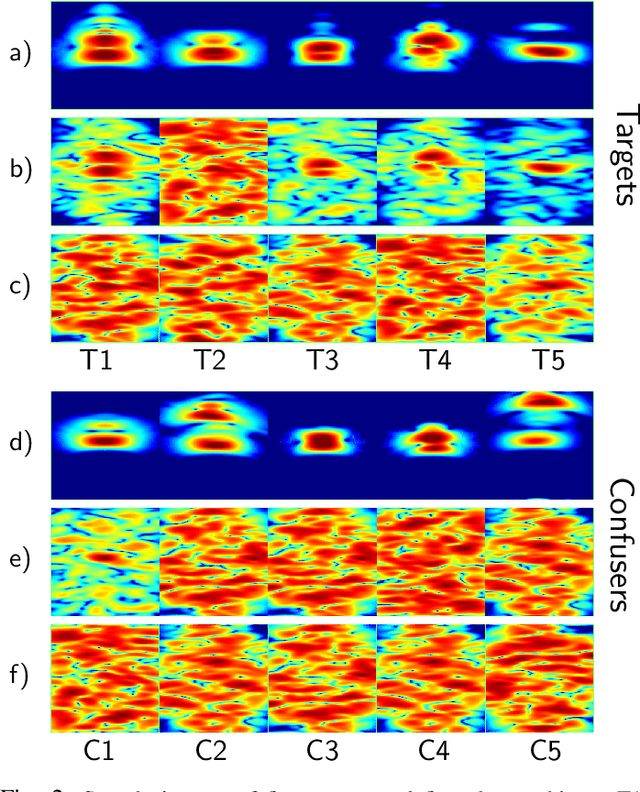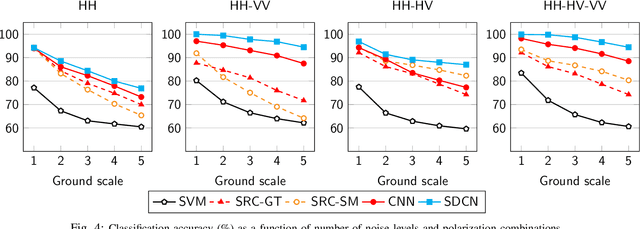Deep Network for Simultaneous Decomposition and Classification in UWB-SAR Imagery
Paper and Code
Feb 22, 2018



Classifying buried and obscured targets of interest from other natural and manmade clutter objects in the scene is an important problem for the U.S. Army. Targets of interest are often represented by signals captured using low-frequency (UHF to L-band) ultra-wideband (UWB) synthetic aperture radar (SAR) technology. This technology has been used in various applications, including ground penetration and sensing-through-the-wall. However, the technology still faces a significant issues regarding low-resolution SAR imagery in this particular frequency band, low radar cross sections (RCS), small objects compared to radar signal wavelengths, and heavy interference. The classification problem has been firstly, and partially, addressed by sparse representation-based classification (SRC) method which can extract noise from signals and exploit the cross-channel information. Despite providing potential results, SRC-related methods have drawbacks in representing nonlinear relations and dealing with larger training sets. In this paper, we propose a Simultaneous Decomposition and Classification Network (SDCN) to alleviate noise inferences and enhance classification accuracy. The network contains two jointly trained sub-networks: the decomposition sub-network handles denoising, while the classification sub-network discriminates targets from confusers. Experimental results show significant improvements over a network without decomposition and SRC-related methods.
 Add to Chrome
Add to Chrome Add to Firefox
Add to Firefox Add to Edge
Add to Edge